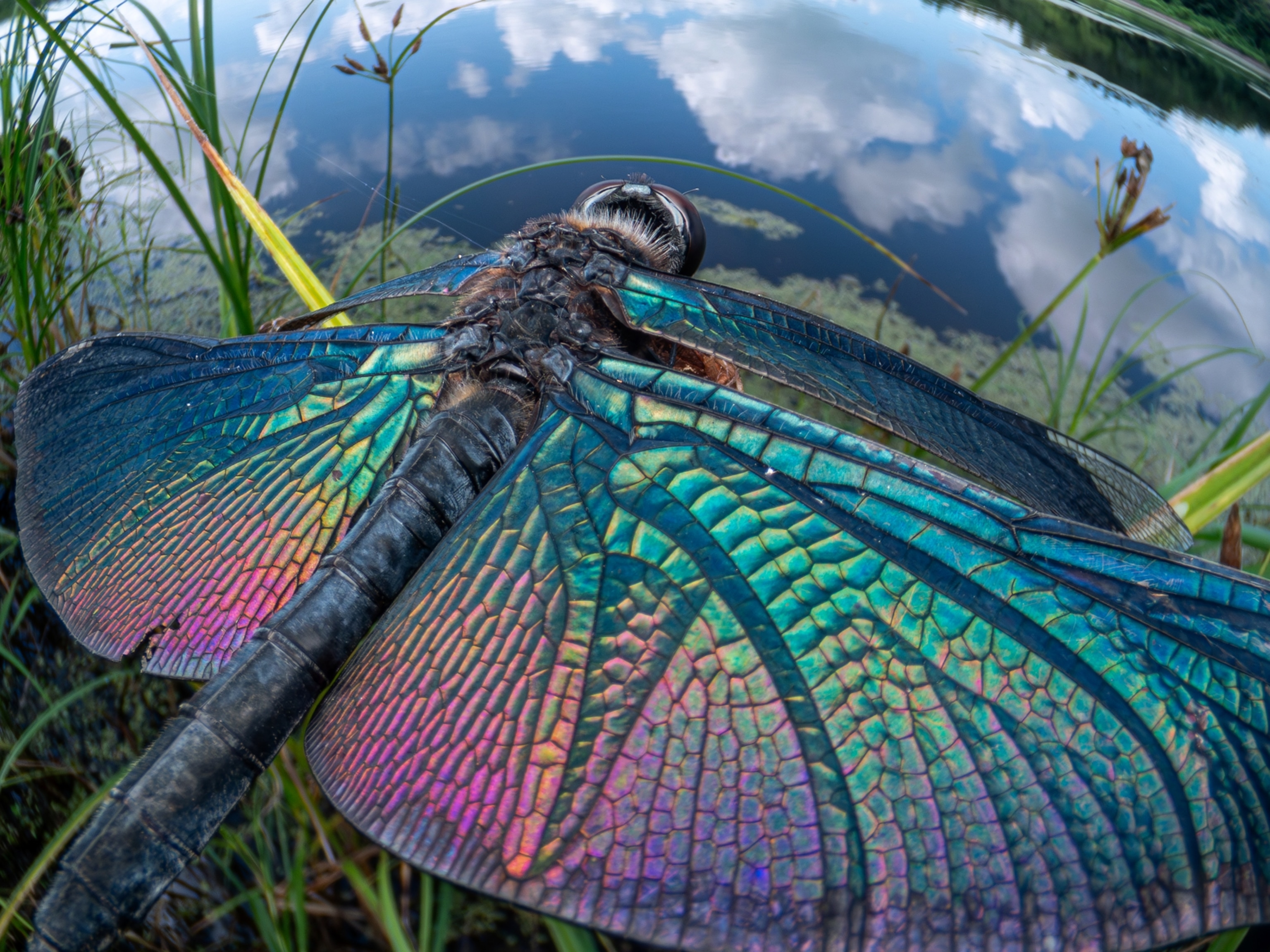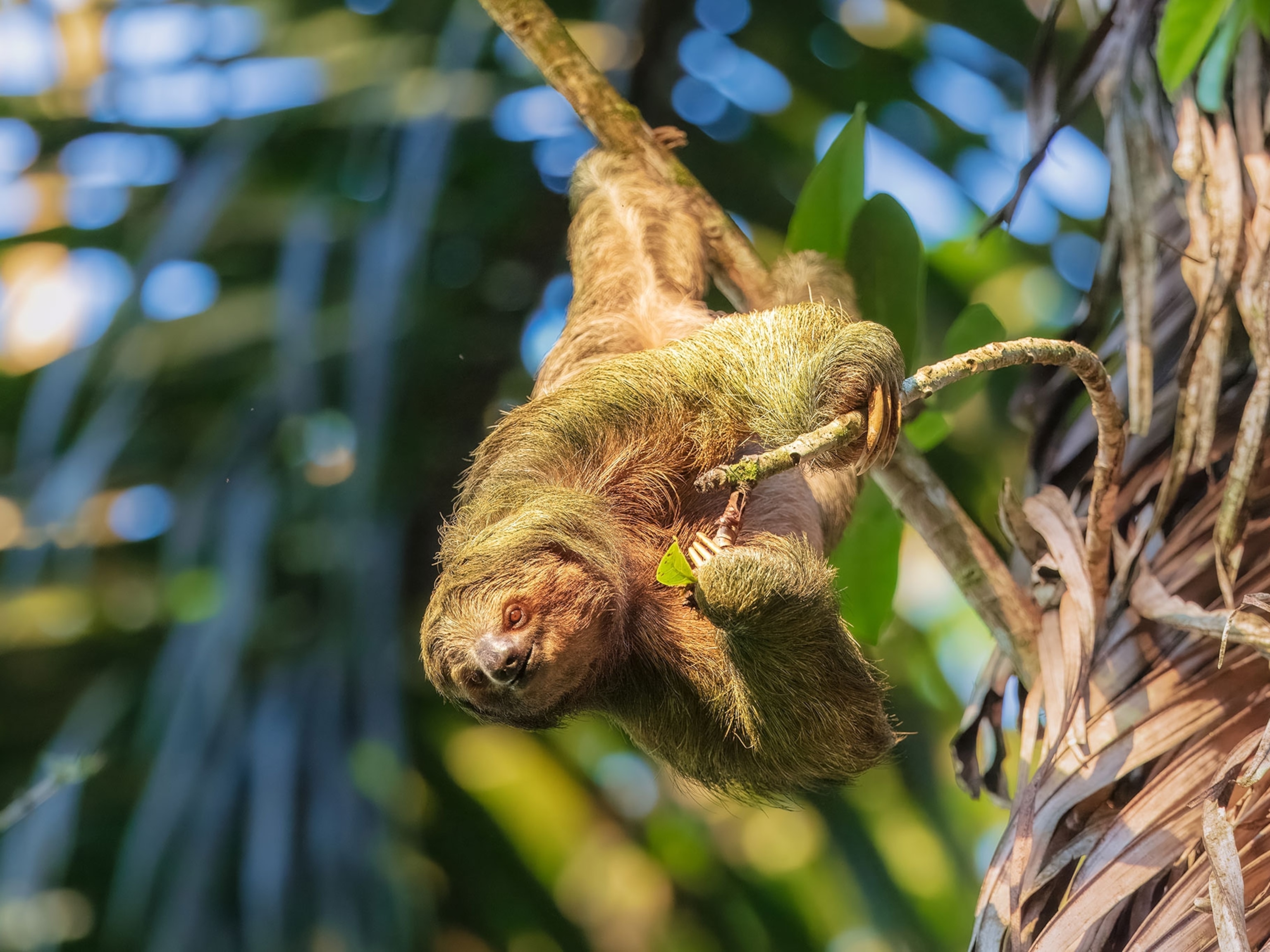Dragon Mantis Captured in Extremely Rare Video
The elusive leafy-looking insect, a master of disguise, was recently spotted in Brazil’s Atlantic Forest.
It may not be an exact doppelgänger for fire-breathing Drogon or Smaug, but the Brazilian dragon mantis is quite eye-catching indeed—that is, if you manage to spot the insect at all.
Exquisitely camouflaged both in shape and behavior, the dragon mantis, with its leafy-looking appendages and slightly drunken swagger, resembles a swaying twig.
Normally, it easily hides in plain sight among the shady, dense foliage of the Atlantic rain forest—but a group of sharp-eyed researchers recently captured the dragon mantis and recorded a rare video of its magnificent disguise in Brazil’s Reserva Ecológica de Guapiaçu.
“We were really surprised, as this mantis is considered legendary among specialists,” says Leonardo Lanna, a researcher with Project Mantis who led the expedition to find Stenophylla cornigera. (See pictures of praying mantises wearing 3-D glasses—for science.)
“We had a list with the greatest mantis we’d love to find during the expedition, and Stenophylla was on top of it.”
Charming Ambassadors
Recently reclassified and grouped into a separate family, Stenophylla cornigera is rare even among mantises, whose range and numbers aren't well recorded in dense rain forests. In fact, Lanna says, the three species in the genus Stenophylla are mostly known from museum collections.
“Seeing a live one is something few people did,” says Lanna, who received funding for his expedition from the National Geographic Society.
In December 2017, Lanna and his Project Mantis colleagues went into the Atlantic rain forest to find and study new, rare, or historically undocumented mantises.
Scientists suspect mantis species could be ideal for studying the drivers of insect evolution, plus so little is known about mantises that their ecological role is largely a mystery.
Such research is urgent, as deforestation is rapidly destroying one of the richest and most endangered biomes.
“Mantises are charming and harmless insects,” Lanna says. “They are like ambassadors, essential to break the barrier most people have with insects and the tiny world.”
One night, while on the prowl for these carnivores, Lanna and his colleagues found not one—but two!—male dragon mantises. The insects had flown into their light traps, which lure bugs by doing exactly what the name suggests. (See a praying mantis devouring a hummingbird.)
“We couldn’t believe our eyes,” he says. “Now we are sure that, like most of the mantises, adult males are nocturnal fliers that guide themselves by moonlight.”
Masters of Disguise
In addition to that slick trick of flying by the light of the moon, some mantises can also survive a meal of venomous caterpillars and drink papaya sap that is normally poisonous to other insects.
And, they’re known for being superbly camouflaged; just try and find an orchid mantis perched among several flowers. But it turns out that in addition to their shapes and colors, mantises are also camouflaged by their behavior, and many will use a swaying gait to break up what would otherwise be a “fluid pattern of movement through vegetation,” says Gavin Svenson, an entomologist at the Cleveland Museum of Natural History.
This means that Stenophylla cornigera’s seemingly inebriated stumble is actually a strategy that’s been fine-tuned by eons of evolution. Where the dragon mantis differs from its similarly swaying kin, though, is in the placement of its large front legs, which remain curled near the insect’s head and aligned perpendicularly. (See pictures of amazing insect camouflage.)
“So far, this is unique to this genus of mantises and the video shows this well,” Svenson says. “I have not heard a compelling reason as to why they do this other than enhancing camouflage.”
“They may be rare due to their numbers,” he adds, “but it is also possible that we just don't see them often because they are so hard to find.”








